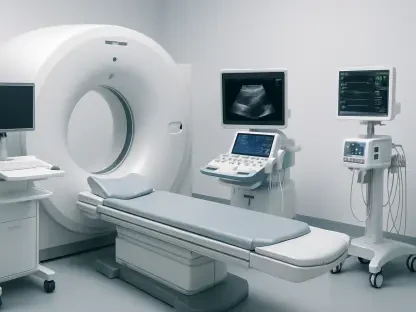In a rapidly evolving healthcare landscape, James Maitland stands out as a distinguished expert in integrating robotics and IoT technologies into medical practice. His insights on the newly announced Wasteful and Inappropriate Service Reduction (WISeR) program by the CMS shed light on the intersection of healthcare policy and cutting-edge technology. The conversation explores the objectives of WISeR, the utilization of AI in prior authorization, and the impact on both healthcare costs and patient care.
Could you explain the main objectives of the WISeR program?
The WISeR program is primarily designed to curtail unnecessary healthcare expenditures by enforcing prior authorization for certain Medicare services identified as prone to abuse. The goal is to ensure that beneficiaries aren’t subjected to needless procedures that inflate costs while offering minimal clinical benefits.
What specific services will require prior authorization under WISeR?
The initiative initially targets services like skin and tissue substitutes, electrical nerve stimulator implants, and knee arthroscopy for osteoarthritis. These are areas where we see high spending but questionable value for the patient, hence the need for closer examination.
How will AI technology be utilized in the prior authorization process?
AI will play a crucial role in streamlining the review of services by efficiently processing claims data and flagging potentially inappropriate procedures. This technology aims to reduce the time it takes to authorize care, minimizing delays in patient treatment.
What measures are being taken to ensure that patients do not experience delays in receiving necessary care?
To prevent delays, the program includes exemptions for time-sensitive care. Services that, if postponed, would pose a substantial risk to the patient’s health are not subject to prior authorization. Moreover, licensed clinicians are involved to swiftly review and approve these cases.
Why are some Medicare services being targeted as “prone to abuse”?
Some services are identified based on usage patterns and historical spending data that suggest overutilization without proportional patient benefits. The CMS aims to eliminate this low-value care that contributes to unnecessary spending and may even harm patients.
How did CMS determine the services that would be included in the WISeR model?
Services were selected through a thorough analysis of healthcare spending and clinical data to pinpoint areas with high utilization rates, questionable clinical value, and potential for cost-saving interventions without compromising patient care.
Can you provide more details about how the model is expected to reduce healthcare spending?
By reducing the approval of unnecessary procedures, WISeR can significantly lower Medicare expenses. The aim is to scale back on low-value services that do not contribute to patient health, thus directing resources more efficiently.
What impact do low-value services have on both patients and the healthcare system as a whole?
Low-value services increase the financial burden on both the health system and patients. They also pose risks of physical harm and needless psychological stress when patients undergo unnecessary treatments, detracting from trust in the healthcare system.
What role will licensed clinicians play in the decision-making process for care denial?
Clinicians are integral to the WISeR approach, ensuring that any care denials are justified medically. Their expertise ensures that decisions are made with patient health as the forefront consideration, countering potential inaccuracies in AI assessments.
Are there any specific criteria for time-sensitive care that will be exempt from the WISeR program?
Yes, the program exempts inpatient-only services, emergency services, and any service where delays could pose significant risk to the patient. This ensures prompt care where timing is critical.
How does the WISeR initiative differ from the reforms pledged by private insurers?
WISeR specifically targets traditional Medicare services to streamline processes and cut costs, while the private insurers’ reforms focus on reducing the number of claims subjected to prior authorization in a broader healthcare context.
In what ways will WISeR help in reducing the administrative burden for providers?
The integration of AI is a key element, reducing the time providers spend navigating complex authorization processes. This streamlining means fewer resources are devoted to administrative tasks, allowing healthcare professionals to focus more on patient care.
What kind of feedback or input is CMS seeking from technology companies for the WISeR program?
CMS is actively seeking solutions that can enhance claims processing and reduce inappropriate utilization. Companies with experience in healthcare technology are urged to contribute innovations that could facilitate efficient medical review and administrative ease.
How will CMS ensure that the adoption of AI technology will maintain fairness and accuracy in the authorization process?
CMS will implement comprehensive oversight and regularly assess AI systems to ensure they operate within ethical standards, providing fair and accurate outcomes. Continuous clinician input also acts as a safeguard against potential AI misjudgments.
Given that WISeR will not apply to Medicare Advantage, do you foresee any challenges or gaps between traditional Medicare and Medicare Advantage beneficiaries regarding prior authorization?
Yes, differences in prior authorization processes between these plans could create disparities in patient experiences and access to care. It’s crucial for CMS to monitor these gaps closely and adapt strategies to ensure equitable care for all beneficiaries.
What are the anticipated benefits for Medicare beneficiaries from the successful implementation of WISeR?
Beneficiaries are expected to receive care that is more aligned with their actual medical needs, reducing exposure to unnecessary procedures and associated costs. This precision aims to enhance overall patient satisfaction and trust in the healthcare system.
Can you discuss the significance of the recent pledge by health insurers to reduce claims subject to prior authorization?
This pledge signifies a shift in the industry towards more patient-centered care, recognizing the burdensome nature of extensive prior authorizations. By streamlining processes, insurers hope to improve patient experience and clinical outcomes.
How does the commitment by private insurers to reform align with or complement the goals of WISeR?
Both initiatives aim to optimize healthcare delivery by eliminating unnecessary procedural hurdles. Together, they strive to lower costs while maintaining high standards of patient care through improved administrative practices.
What strategies will be implemented to measure the success of the WISeR program over its six-year span?
The program’s success will be evaluated through metrics such as reductions in healthcare spending, rates of denied unnecessary procedures, and improvements in patient and provider satisfaction. Continuous data review will be critical for assessing impact.
What are some long-term goals for the CMS with initiatives like WISeR in addressing healthcare waste and fraud?
Long-term, CMS aims to build a more sustainable healthcare model that prioritizes value over volume, focusing on evidence-based care. Initiatives like WISeR are steps towards reducing overall waste and fraud, ensuring the responsible use of resources.
Do you have any advice for our readers?
Stay informed about the changes in healthcare policies and actively participate in discussions. Being engaged will not only help you navigate these changes but also ensure that you’re advocating for better healthcare outcomes for yourself and your community.









